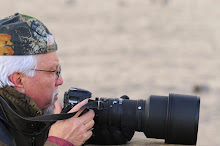Question: "A friend told me that there are so many turkeys this year that the hens didn't even bother to nest, but simply walked about letting their eggs drop and be abandonded. Is that possible?
Such strange assumptions are common when changes in normal wildlife activity are noticed, proving that the general public enjoys seeing wildlife and cares about its welfare.
Answer: Older wild turkey hens are substantially more efficient at reproduction than are young-of-the-year hens. And, when the turkey population contains a large percentage of young hens it is common to notice youthful hens with just one or two chicks.
In mid July, a local rural resident noticed a small wild turkey hen, that appeared to be nesting in the center of a large field that he was mowing. He immediately stopped mowing to avoid disturbing her and later carefully investigated the site; the young hen was indeed nesting. "Why are the turkeys nesting so late this year, " he asked? Quite simply, young hens typically mate and nest late in the spring, after adult hens. In addition, they are not as skilled in avoiding detection and protecting their nests as are the wiser, more experienced adult hens.
In the event of nest destruction young hens normally renest much later too. The young hen that was still nesting in July had almost certainly lost her initial nest to predation or another disturbance, but was determined to complete her natural and instinctive obligation to wild turkey society. Nesting is a vitally important and innate portion of the wild turkey's annual natural history that cannot be denied or simply abandoned.
Researchers have learned that when wild turkey populations are high, reproductive success declines and vice versa. This dynamic contributed greatly to the phenomenal success of the wild turkey trap and transfer program over the past several decades. When introduced into a new habitat containing virtually no birds, wild turkeys, reproduce with amazing success and quickly populate the new territory.
Wildlife is amazingly able to survive and thrive in suitable habitat - that's a vital commodity that we humans can provide.







